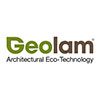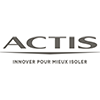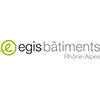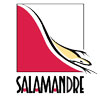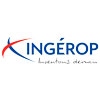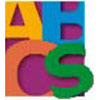Builders, owners and operators of establishments open to the public, high-rise buildings (HRB), industrial or residential buildings, and rail and maritime transport facilities are obliged to ensure the safety of people with regard to fire risks in accordance with the regulations in force (decree of 25 June 1980, safety obligations for establishments open to the public, Housing Code, DF4, IT246, IT249, AM8, etc.). LNE's fire safety engineering and special testing services help to overcome the difficulties of applying these regulations.
Fire safety engineering services
By analysing the performance of a structure or means of transport in relation to the risk of fire, FSE makes it possible to respond to difficulties in applying current regulations. Using tests and numerical simulations, it aims to gain a better understanding of the complex phenomena involved in fire propagation, and to meet new regulatory requirements, which increasingly call for results-based obligations.
Thanks to its laboratory activities, experience and national and European approvals, LNE is a major player in fire engineering for the construction and transport sectors.
Our offer includes tests, calculations and analyses, as well as support within the framework of regulatory obligations (safety obligations for establishments open to the public and the French Housing Code) but also in the context of technical assistance (all sectors: building, transport, etc.):
- Laboratory studies and assessments in accordance with regulations AM 8 (interior insulation products), IT 249 (exterior insulation products), decree of 7 August 2019 (façade elements), etc.
- Technical and regulatory assistance,
- Modelling using digital tools (OPENFOAM, FDS, COMSOL, etc.)
- Modelling and analysis of smoke extraction system performance (IT246) and evacuation conditions based on realistic fire scenarios
- Estimation and optimisation of the time required to bring people to safety in a structure under fire conditions using digital modelling/simulation and instrumented experimental campaigns
- Reaction of materials and components to fire
- Analysis of smoke toxicity in ICPE hazard studies
LNE can also carry out tests on different scales to ensure that products can be integrated as close as possible to the real world. We can check the effectiveness of products, taking into account the complexity of their implementation and/or industrial characteristics.
Peri-regulatory studies
AM8, IT246, IT249, DF4…
In the building sector, various articles of the safety regulations (AM8, DF4) now include fire safety engineering. The current regulatory trend (ESSOC law) is to generalise performance-based approaches with an obligation to achieve results, in particular by offering project owners the possibility of derogating from regulatory requirements through engineering.
Contract testing, specific tests...
ICPE
ICPEs (Installations Classées pour la Protection de l'Environnement - Classified Facilities for Environmental Protection) are industrial or agricultural operations likely to create risks or cause pollution or nuisance, particularly for the health and safety of local residents.
Following the Lubrizol fire in 2019, changes were made to the ICPE regulatory framework. In particular, the decree of 24 September 2020 requires operators to draw up a list of species that could be released in the event of a fire. We have the experimental resources and know-how needed to carry out this type of study.
System approaches
Some construction systems, such as openwork systems, are not adapted to existing regulatory frameworks (Euroclasses). Our testing resources and expertise enable us to take these complex building systems into account by producing an appropriate experimental methodology, based on tests and simulations.
Focus on smoke extraction
The aim of smoke extraction engineering is to assess the performance of a smoke extraction system planned for a building, by studying its smoking and evacuation conditions, as a function of the occupants and uses (smoke opacity, ambient temperature and thermal radiation).
This engineering applies to any type of structure with smoke extraction or ventilation requirements.
Thanks to today's IT capabilities, engineering tools can provide highly advanced analyses of fluid mechanics and smoke propagation within a structure in the event of a fire, including large structures and structures with complex geometries.
In France, since the decree of 22 March 2004, smoke ventilation engineering has been an official regulatory alternative. Today, our teams of specialist engineers are able to respond to all requests relating to these issues, regardless of the safety regulations that apply.
It should be noted that current regulatory developments (in particular with the current rewriting of the Construction and Housing Code (CHC) are tending towards a general obligation to achieve results, rather than an obligation to comply with regulatory requirements. This is why the use of smoke extraction engineering continues to grow, to ensure better protection for people and property.
Resources available
In certain configurations, conventional tests may be insufficient or inappropriate for assessing a system. In such circumstances, special tests are required to characterise the fire behaviour or assess the performance of a system or construction element in a real fire situation.
LNE has more than 1,000 test benches and equipment, ranging from the smallest to the largest scale (in ventilated or non-ventilated environments). These platforms can be used to carry out a wide range of tests on materials, products and building components, as well as construction processes.
In response to client demand, we are able to deploy the following equipment:
| Instrument |
Specifications |
| MBI (medium burning item) test bench with burner tailored to target exposure flows |
- Flame propagation
- Energy flux
- Smoke development rate
|
| Cone calorimeters including 1 with controlled atmosphere and smoke analysis |
- Release of energy freed during combustion
- Smoke opacity
- Mass loss
- Dust measurement
|
| SBI (Single Burning Item) Euroclass test bench for modified test (enhanced flux) |
- Flame propagation
- Energy flux
- Smoke development rate
|
| Combustion charaterisation coupled with the resources of the nanomaterials metrology platform |
|
| Accelerated ageing |
- All-volume environmental chambers
- Climatic chambers from -80°C to 600°C
|
| Calorimetric hood |
- Measurment of speed and propagation mode
- Analysis and actual concentrations of combustion products and toxic smode
|
| Computation cluster |
Computation codes used: FDS and COMSOL |
For all of the above testing equipment, we are able to incorporate complementary instruments (e.g. FTIR for the gas analysis, DMS or DLPI for the dust analysis).
Why Choose LNE
- A recognised expert in the field of fire and in the qualification of construction and fitting products
- Notified body No. 0071 for CE marking according to the European regulation No. 305/2011 concerning construction products and an accredited laboratory, as a testing laboratory for the fire behaviour of materials by the order of 05/02/1959 modified by the order of 21/11/2002 relating to the reaction to fire of construction and fitting products
- Participation in the Bureau de normalisation ferroviaire (BNF) - Bureau of Railway Standardisation responsible for the CEN TC 256/WG1 standard at the European level and in various French standardisation commissions: AFNOR X65 (building fire safety), AFNOR X65T (effects of fire on people and the environment), AFNOR X65M (ship fire safety), AFNOR P92 (fire behaviour of materials) and Fire Safety Engineering (AFNOR/ISI) and COS CURB (Strategic Committee for Construction & Urbanism)
- Leader of the EUROLAB “Fire Behaviour” group
- Member of EGOLF (European Group of Organisations for Fire Testing)
- Recognised by the Ministry of the Interior as competent to carry out smoke control engineering activities in Public Buildings (under article DF4 of the order of 25 June 1980 modified, Official Journal of 1 January 2009).
